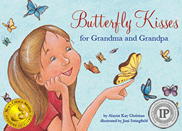Today, author Ellen Leventhal helps me launch my new blog series Arc Angel, and she is offering a softcover copy of her sweet book, Lola Can’t Leap, to one lucky winner. All you have to do is leave a comment for this post, and your name will go in the drawing for December 13.
In the Arc Angel series, I will work with published authors as we use our books and have Q and A sessions to help demonstrate good narrative and character arcs when writing picture books.
The idea for this blog series began brewing in my mind about a year ago when one of my critique buddies called me her arc angel. I got a kick out of the play on words and appreciated the compliment. That same day, I wrote the following after the song Earth Angel. You can listen to the song Earth Angel below.
Arc Angel
Arc angel, arc angel,
will you define?
My darling plot
must impress and shine.
I need a tool—
a tool or two from you.
Arc angel, arc angel,
I want to explore,
sharpen my writing forevermore.
I need a tool,
a tool or two from you.
I dreamed of you, and I knew,
I could improve my plot’s liveliness!
I hoped and I prayed that someday,
I’d have the vision of arc happiness.
Arc angel, arc angel,
will you define?
My darling plot
must impress and shine.
I need a tool—
a tool or two from you.
And Heeeeere’s Ellen!

Today’s Arc Angel is the talented author and my fabulous friend and critique buddy, Ellen Leventhal. Thank you for joining us today, Ellen. As you know, the main plot points of the story arc usually include the exposition, ordinary world, inciting incident, rising action, climax, and falling action that slips into resolution. Your books Lola Can’t Leap and Don’t Eat the Bluebonnets along with your forthcoming book A Flood of Kindness all have well-written story/character arcs.
Don’t Eat the Bluebonnets strays a little from a typical picture book arc formula. But it’s a great example of how arcs can look a bit different but still contain all the elements of a good arc.
Before we move into showing the basic plot points of your stories, I’d like to ask you a couple of questions.
EL: Happy to answer whatever I can! But first, I want to thank you for having me. By the way, that Arc Angel song is quite impressive! The only thing better would be for YOU to sing it to everyone!
AKC: Okay. You asked for it . . .
Q: From your experience as a published author, why would you say that understanding arc is important for any writer to master? Could you also address the value of emerging writers learning it and using it?
A: In my mind, ARC is STORY. Without an arc, you just have a group of ideas or actions. Now that’s a fine starting place, but it doesn’t lead to a satisfying ending. As writers, we have to think about how the actions are related and move the characters (and readers) through the story. Stories take us on journeys with a beginning, middle, and end. Thinking about plot points and arc gives both emerging and experienced writers a structure. For me, keeping the arc in mind while I write and revise helps me stay on track. I’m not saying it’s easy, but I think it’s important.
Q. What suggestions do you have for strengthening an arc?
A: I guess it would be cheating to say that my first suggestion is to have a talented friend like Alayne Kay Christian who can tell you when you are totally off.
AKC: I’m blushing. You’re too kind.
But barring that, I do a few things.
- After the first few super sloppy drafts, I begin to analyze what I have.
- I pop the plot points into a very simple story map to see if I have the elements of a story. If I’m lucky, the elements are there. But if I can’t find the rising action, climax, and resolution, I go back to the drawing board. (actually, the computer screen or yellow pad)
- I’ve recently begun to look at arc separately when I revise. That’s difficult for me because a lot of other elements of good writing come easier to me. Give me a sentence to revise; I’ve got it! Give me an arc to revise; that’s work. But VERY needed and satisfying work.
Q: Do you write organically (pantser) or do you use an outline (planner)?
A: I am definitely a pantster with dreams of becoming more of a planner. For picture books, I always know my main character and problem before I start, and on a good day, I know the major plot points and some action. But being mostly a pantster, I don’t always know exactly what goes between those points or how I’m going to get to the end. On not so good days, I just have a character, theme, and some idea of where I want to go when I first sit down to write. But I get there! It’s just a bit circuitous.
I do try to have more of an outline for longer stories. But none of those stories are published, so there’s that. 😊
Q: Whatever your method, what is the value in that approach?
A: For me, I need the freedom to allow new thoughts into my head as I write that first messy draft. I am a list person in my non-writing life (although my list usually says, “Finish that draft!”) The few times I outlined every beat, my “do the list” personality popped up, and I had a difficult time deviating from the outline and letting my mind flow.
Q: Do you believe there is any value in the opposite approach? Do you sometimes wish that you worked that way, or have you ever considered trying it?
A: Absolutely there is a lot of value in being more of a planner! The most obvious value to me is that it will probably cut down on revision time. I think that it is easier to keep arc and story in mind when the plot points are in front of you. I am actually outlining a picture book now with the hopes that it will aid in keeping word count low.
Q: If you’re a pantser, are you aware of the arc while you are writing? Or during editing, once the basic idea gets down on paper?
A: As a pantster, I do think about the arc as I write first drafts, but it’s not uppermost in my mind. For me, the real work of making sure there is a GOOD arc comes during those early revisions. I usually know the end, so I have to figure out how to get there while keeping the theme, voice, and emotion of the story.
Q: I’m not sure this next question is possible to answer. Why do you think the arcs for Don’t Eat the Bluebonnets and Lola Can’t Leap took different arc journeys?
A: The first reason for this is because I wrote Don’t Eat the Bluebonnets with my talented friend, Ellen Rothberg. In fact, the major question of the story was her idea. What would happen if a cow ate some bluebonnets? This book was born of conversation and lots of laughs. We were somewhat clueless about writing picture books when we first started, but being educators who read a lot, we did understand basic story structure. When I started Lola Can’t Leap, I knew it was for younger children, and I wanted a specific, easy to follow structure.
Q: Your forthcoming book A Flood of Kindness (great title, by the way) has an excellent arc, too. You do a really good job of building tension. Would you please tell us a little bit about A Flood of Kindness? What is it about? And why do you think the arc is important to this story? What was your approach to building the arc?
A: Glad you like the title! Thank you! I went through many different ones, and I was surprised when the publisher kept that one. But I do like it.
The story follows Charlotte, a young girl who watches floodwaters rise in her home and is forced to evacuate to a shelter with her parents. As Charlotte adjusts to the shelter–a strange, crowded place that is not home–she grapples with feelings of anger and sadness. But as the days go by, Charlotte starts to realize how grateful she is for the things that she does have–her parents, a cot to sleep on, food to eat–and begins looking for ways to help others in the shelter. The book addresses grief and loss and demonstrates how kindness can bring hope.
The arc is very important in this story because aside from outside circumstances, there is a strong emotional arc. I think in order for children to be drawn to the story, they must feel, not just see, Charlotte’s transformation. My approach to building the arc in this story started with the character’s emotional arc, and then I plugged in circumstances to support it.
AKC: I think emotional core is key to any story–even humorous ones. The reason I say even humorous stories is because any emotional connection that the reader has to the character and story is a connection that makes the reader want to keep reading. And caring about the character and what might happen to him/her makes the reader turn pages. Charlotte’s emotional journey definitely makes the reader care.
Q: I did a quick breakdown of the arc elements in Bluebonnets and Lola. Would you mind doing one for A Flood of Kindness? I’m not asking for a diagram, but if you can fill in the areas below. It’s fine to use generalities, and please don’t give your ending away. Feel free to adjust as needed for your book.
- Ordinary World: This book opens with the inciting incident.
- Inciting Incident: Water seeps into Charlotte’s room.
- Rising Action: She goes to the shelter.
- Dark Moment: She goes back home and sees that the house is destroyed.
- Inner Climax: She sees people performing acts of kindness and sees a little boy with no toys.
- Outer Climax: She gives the little boy her beloved Teddy Bear.
- Resolution: She smiles for the first time since the flood.
Plot points for Don’t Eat the Bluebonnets by Ellen Leventhal and Ellen Rothberg, illustrations by Joel Cook, Clear Fork Publishing 2017
I find this arc interesting because it’s almost like it has two of everything—two inciting incidents, climaxes, and so on. And that works to build even more tension than the typical formula. I like a story that has lots of ups and downs.
To blog readers: In my analysis, I intentionally give basic plot points to protect Ellen’s work. It will be important to analyze the book to find how each plot point is fully executed. I’m sorry about the ending, but it is common practice to never give the ending away.
First Part
- Ordinary World: Sue Ellen is a cow that dances to her own beat.
- Inciting Incident: Max puts up a sign, “Don’t Eat the Bluebonnets.” Sue Ellen loves bluebonnets and announces that Max is not her boss, and she will eat the bluebonnets if she wants.
- Rising Action: Bluebonnets are popping up everywhere, tempting Sue Ellen. And no matter how many animals warn her the dangers of eating the bluebonnets . . .
- Inner Climax: Sue Ellen makes a decision.
- Outer Climax: She eats all the bluebonnets!
- Dark Moment: Her friends are all mad at her and her belief system is challenged when the bluebonnets don’t come back.
Second Part
- New Ordinary World: There are no more bluebonnets in Sue Ellen’s pasture.
- Inciting Incident: Sue Ellen decides to find a way to bring the bluebonnets back.
- Rising Action: Sue Ellen tries several creative ways to bring the bluebonnets back, but she fails with each attempt.
- Dark Moment: Sue Ellen may not find a way to bring the bluebonnets back. Then what?
- Inner Climax: Sue Ellen realizes how important the bluebonnets were to her, and she’s back to thinking.
- Outer Climax: When the other animals offer to help, Sue Ellen gets an idea, dashes off, and puts her plan into action.
- Resolution: I can’t tell you how Sue Ellen solved her problem or how the story ends, but I will share that the ending is satisfying and that Sue Ellen gains a new appreciation for bluebonnets, friends, and rules.

Plot points for Lola Can’t Leap by Ellen Leventhal, illustrated by Noelle Shawa
Clear Fork Publishing 2018
This story follows more of the classic arc formula.
- Ordinary World: Lola comes from a long line of leapers, and she longs to leap, but she has to wait until she’s just the right age.
- Inciting Incident: Lola’s birthday—she has finally reach leaping age.
- Rising Action: Lola tries in the most fun and entertaining ways to leap the fence, and fails each time.
- Dark Moment: Poor Lola. She works so hard, trying in every way imaginable to get over the fence so she can help the babies sleep. But no matter how hard she tries, nothing works. She’ll never help the babies sleep if she can’t leap. Lola gives up. With her head hanging, she heads home.
- Inner Climax: When Lola hears a baby’s cry, she decides to try something different.
- Outer Climax: Lola puts her plan into action.
- Resolution: Satisfying ending with a twist. And the art provides another surprise.

To see some plot points for other books visit Kid Lit Takeaways here.
Thanks again, Ellen for taking time to spread your angel wings and share your arc thoughts. I really related to your feelings about being a pantser and writing first drafts organically. I think the more we work with arc, it is naturally in the back of our mind and part of the process, but not the focus on those first drafts. We have to let our characters lead the way. I also hear what you are saying about perhaps having less revision work if we bring the arc into the story earlier in the process. I’m sure that’s why on my first rough draft of a story with my critique group this month, I got a comment back that there are three different themes that I could make my focus. However, I’m not sure I can write from the heart if I were a planner. It’s all definitely a balancing act.
About Ellen
Ellen Leventhal is an educator and writer in Houston, TX. Ellen is the co-author of Don’t Eat the Bluebonnets, the author of Lola Can’t Leap, and the upcoming A Flood of Kindness, which releases in April 2021 from Worthy Kids/Hachette Book Group. She has been published in magazines, newspapers, as well as in poetry and short story anthologies. Ellen loves school visits (in person or virtual)! When visiting schools, she coordinates with and supports literacy programs as well as diversity and anti-bullying programs. Ellen’s best days are when she can interact directly with the students and spread her love of literacy and kindness. To find out more about Ellen’s books and writing projects, please go to www.Ellenleventhal.com











